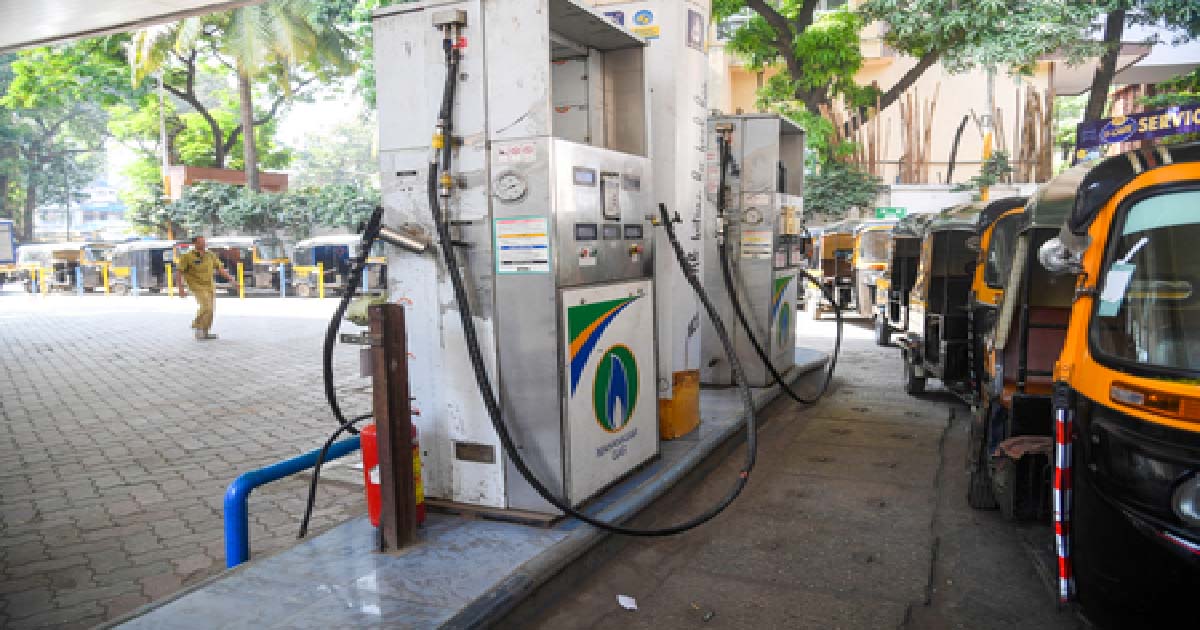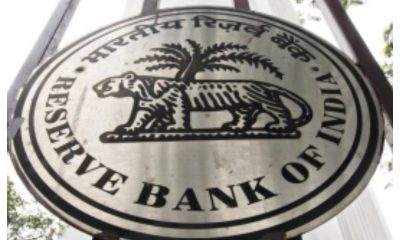Business
RBI doubles housing loan limits for co-operative banks
Taking into account the increase in prices since the housing loan limits were last revised and considering the customer needs, central bank Reserve Bank of India decided to increase the existing limits on individual housing loans by the cooperative banks.
Accordingly, the limits for Tier I or Tier II urban cooperative banks shall stand revised from Rs 30 lakh or Rs 70 lakh to Rs 60 lakh or Rs 140 lakh, respectively, which essentially means doubling of the limit.
The increased limits will apply for Primary (Urban) Co-operative Banks (UCBs), and Rural Cooperative Banks (RCBs) — State Cooperative Banks and District Central Cooperative Banks.
For RCBs, the limits will increase from Rs 20 lakh to Rs 50 lakh for such banks with assessed net worth less than Rs 100 crore; and from Rs 30 lakh to Rs 75 lakh for other such RCBs.
A detailed circular will be issued separately, the RBI said in a statement.
“The 100 per cent upward revision in credit limit for individual homebuyers through cooperative banks will provide increased credit access to homebuyers in suburban areas as well as tier-2/3 cities,” said Samantak Das, chief economist, and head of research and REIS, India, JLL.
According to Dhruv Agarwala, Group CEO, Housing.com, PropTiger.com & Makaan.com: “…the RBI’s announcement to increase the limit for individual housing loans by state and district cooperative banks by 100 per cent is a positive move that will cushion some of the impact of the rate hike. Credit flow to the housing sector is also likely to improve with rural cooperative banks starting to finance residential projects.”
Besides, considering the growing need for affordable housing and to realise their potential in providing credit facilities to the housing sector, the RBI decided to allow State Co-operative Banks (StCBs) and District Central Co-operative Banks to extend finance to Commercial Real Estate – Residential Housing (CRE-RH) within the existing aggregate housing finance limit of 5 per cent of their total assets.
In order to attain harmonisation of regulatory framework across REs and to provide convenience of banking services to the customers at their door-step, it has been decided to permit Urban Co-operative Banks to extend doorstep banking services to their customers on par with scheduled commercial banks.
RBI also proposed allowing linking of credit cards to UPI. To start with, Rupay credit cards will be enabled with this facility.
“This arrangement is expected to provide more avenues and convenience to the customers in making payments through UPI platform. This facility would be available after the required system development is complete. Necessary instructions will be issued to NPCI separately,” the statement said.
All these measures were announced this morning while pronouncing the outcome of the ongoing monetary policy review meeting that started on Monday.
RBI on Wednesday raised the repo rate by 50 basis points to 4.9 per cent to tame rising inflation.
RBI Governor Shaktikanta Das on Wednesday categorically said India’s retail inflation is likely to stay above the tolerance level till third quarter of FY23 before moderating below 6 per cent.
For FY23, RBI sees overall inflation at 6.7 per cent, with 7.5 per cent in Q1, 7.4 per cent in Q2, 6.2 per cent in Q3, and 5.8 per cent in Q4, taking into consideration the normal monsoon and average crude oil basket price of $105 per barrel.
Coming to growth, India’s real GDP growth in FY23 is seen at 7.2 per cent, will 16.2 per cent in Q1, 6.2 per cent in Q2, 4.1 in Q3, and 4.0 in Q4, with risks broadly balanced, Das said.
Business
Sensex, Nifty open marginally down amid negative global cues

Mumbai, Nov 21: Indian benchmark indices opened in mild red zone on Friday, amid negative global cues and fading investor hopes of a US Fed rate cut in December.
As of 9.25 am, Sensex declined 80 points, or 0.09 per cent at 85,551 and Nifty dipped 15 points, or 0.05 per cent to 25,860.
The broadcap indices performed in line with the benchmarks, with the Nifty Midcap 100 down 0.30 per cent and the Nifty Smallcap 100 dipped 0.34 per cent.
TCS, Asian Paints and NTPC were among the major gainers in the Nifty Pack, while losers included Hindalco, Shriram Finance, Tata Steel and ICICI Bank.
All the sectoral indices on NSE were trading in red except Nifty Auto (up 0.30 per cent). Nifty Metal down 0.79 per cent was the biggest loser.
Analysts said that India will gain if the AI trade slows down and capital begins to shift into non-AI stocks in emerging markets.
All of the major Asia-Pacific markets fell in early trading sessions after US AI and tech stocks shed value and investors lost hopes of a December rate cut by the Federal Reserve.
The volatility of the market has increased evident by Nasdaq, the barometer of AI trading, ending the day down 2.15 per cent, crashing 4.4 per cent from the intraday peak.
“This type of market movement indicates that there will be more volatility in the future. AI stock prices may see fresh buying at lower valuations. We will need to wait and observe the course of this unstable period,” an analyst said.
The US markets ended in the red zone overnight, as Nasdaq slipped 2.16 per cent, the S&P 500 dropped 1.56 per cent, and the Dow declined 0.84 per cent.
In Asian markets, China’s Shanghai index dipped 1.71 per cent, and Shenzhen dipped 2.52 per cent, Japan’s Nikkei dipped 2.31 per cent, while Hong Kong’s Hang Seng Index declined 2.17 per cent. South Korea’s Kospi dropped 3.94 per cent.
On Thursday, foreign institutional investors (FIIs) sold equities worth Rs 284 crore, while domestic institutional investors (DIIs) were net buyers of equities worth Rs 824 crore.
Business
Indian city gas distribution firms’ operating profit to rise 8-12 pc this fiscal

New Delhi, Nov 20: City gas distribution (CGD) companies in India are projected to clock an operating profit of Rs 7.2–7.5 per standard cubic metre (scm) this fiscal — up 8-12 per cent compared with the second half of last fiscal when margins dropped because of a sudden and steep decline in gas allocation under the administered price mechanism (APM) for the compressed natural gas (CNG) segment, a report said on Thursday.
Consequently, distributors had to take recourse to the spot gas market for supply, which exerted upward pressure on cost. The companies have, thereafter, transitioned to contracted supplies, which is expected to burnish margins.
“Healthy earnings will keep leverage in check despite the proposed capital expenditure (capex) by companies. Our assessment of seven CGD companies, with 70 per cent share of total sales volume last fiscal, indicates as much,” Crisil Ratings said in its report.
CGD companies get gas on priority at lower prices under the APM from legacy gas fields to serve the domestic CNG and piped natural gas-domestic (PNG-D) segments.
Beyond APM, they procure high-pressure, high-temperature (HPHT) gas and imported regasified liquefied natural gas (R-LNG) under contracted and spot purchase mechanisms.
According to the report, in the second half of the last fiscal, APM gas allocated to the CNG segment was reduced to less than 40 per cent of the total CNG requirement, compared with 70 per cent in the first half of the last fiscal.
This led to a substantial increase in gas procurement costs as companies relied on spot purchases, which were 80-100 per cent more expensive than those under APM prices, to protect against supply disruptions.
As a result, spot purchases by volume rose to more than 15 per cent of total supplies from 5 per cent in the first half of the last fiscal.
“Against the 30 per cent reduction in APM allocation for the CNG segment, CGD companies got 15-20 per cent long-term allocations from domestic new well gas, mainly towards the end of last fiscal or early this fiscal. For the balance, they have signed additional medium- and long-term contracts, mainly for HPHT gas and R-LNG,” said Ankit Hakhu, Director, Crisil Ratings.
This will not only improve gas security but also reduce exposure to the spot market, where prices are 25-30 per cent higher on average, he added.
The report noted that realisations are steady this fiscal, following some increase in the second half of last fiscal when companies implemented price hikes to pass on increased costs to consumers, albeit partially and gradually.
However, some of the benefits of reduced gas procurement costs in the current fiscal year will be offset by an increase in other operating costs. These costs will rise as players continue to incur capex to expand gas infrastructure in existing and new geographical areas (GAs) to support volume growth.
Business
Groww shares drop over 9 pc, slip below Rs 1 lakh crore market cap

Mumbai, Nov 20: Groww’s share price continued to fall for the second day in a row on Thursday as investors booked profits after the stock’s strong rally last week.
The shares slipped as much as 9 per cent during early trade, touching an intra-day low of Rs 154.10 on the National Stock Exchange (NSE).
This is a 9.29 per cent drop from the previous day’s close.
During early trade, the market value of Billionbrains Garage Ventures — Groww’s parent company — fell to Rs 97,431.70 crore, slipping below the Rs 1 lakh crore mark.
The decline follows Wednesday’s sharp fall, when the stock hit the 10 per cent lower circuit on both the BSE and NSE, ending a five-day winning streak.
It closed at Rs 169.94 on the BSE and Rs 169.89 on the NSE in the previous trading session.
On Wednesday, the exchanges also revised Groww’s price band from 20 per cent to 10 per cent, limiting how much the stock can move in a single session.
The next key event for the stock is on Friday, November 21, when the company will announce its quarterly results — its first earnings report since listing last week.
Earlier, in a filing to the stock exchanges, Groww said its Board of Directors will meet on Friday, November 21, 2025, to consider and approve the unaudited standalone and consolidated financial results for the quarter and half year ended September 30, 2025.
Another important trigger is expected on December 10, when the one-month lock-in period for shareholders ends.
Groww, founded in 2016, is currently India’s largest stockbroker with more than 12.6 million active clients and a market share of over 26 percent as of June 2025.
-

 Crime3 years ago
Crime3 years agoClass 10 student jumps to death in Jaipur
-

 Maharashtra1 year ago
Maharashtra1 year agoMumbai Local Train Update: Central Railway’s New Timetable Comes Into Effect; Check Full List Of Revised Timings & Stations
-

 Maharashtra1 year ago
Maharashtra1 year agoMumbai To Go Toll-Free Tonight! Maharashtra Govt Announces Complete Toll Waiver For Light Motor Vehicles At All 5 Entry Points Of City
-

 Maharashtra1 year ago
Maharashtra1 year agoFalse photo of Imtiaz Jaleel’s rally, exposing the fooling conspiracy
-

 National News1 year ago
National News1 year agoMinistry of Railways rolls out Special Drive 4.0 with focus on digitisation, cleanliness, inclusiveness and grievance redressal
-

 Maharashtra1 year ago
Maharashtra1 year agoMaharashtra Elections 2024: Mumbai Metro & BEST Services Extended Till Midnight On Voting Day
-

 National News1 year ago
National News1 year agoJ&K: 4 Jawans Killed, 28 Injured After Bus Carrying BSF Personnel For Poll Duty Falls Into Gorge In Budgam; Terrifying Visuals Surface
-

 Crime1 year ago
Crime1 year agoBaba Siddique Murder: Mumbai Police Unable To Get Lawrence Bishnoi Custody Due To Home Ministry Order, Says Report


















